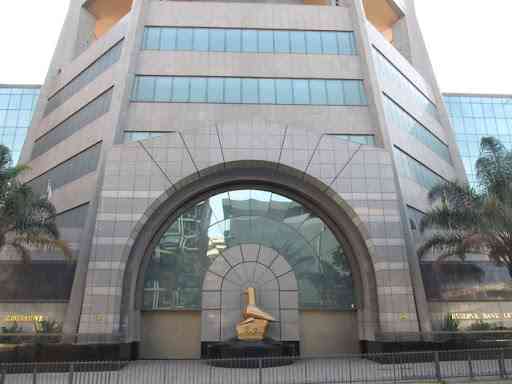
Over five decades ago, the procurement department was often regarded as the backroom office for mediocre talent in the organisation. If there was this sharp storesperson in the business, he would be promoted to be a procurement manager without any formal training in procurement.
After all, the role would be that of a paper pusher who would ensure that purchase orders are processed on time. During that era, poor procurement decisions would not present any significant slowdown of an organisation’s capacity to push the needle.
If there are any organisations in today’s world still following this trend, it probably explains why they are not as profitable as they should. Should organisations continue to retain such mediocre personnel in the business, they will continue to leave a lot of value on the table.
In today’s highly-competitive business environment, the days for uneducated procurement practitioners or paper pushers are long gone, and they are probably seeing their last mile of the procurement journey - unless, of course, their organisations are still prepared to continue leaving money on the table.
It must be understood that being average in the world of procurement has become a subtle failure in a business environment shaped by the pursuit of extraordinary results. The traditional procurement mandate of cost reduction emphasis is slowly seeing its last days. That old playbook is now a liability. Today that playbook is obsolete. The ever present and ominous shadow that has always lurked over procurement’s emphasis on cost reduction ahead of anything else is slowly disappearing.
Procurement teams are now considered to be best placed to pursue other value addition strategies such as being the first line of defence to protect profit margins against high inflation. It is slowly being recognised that enhanced procurement performance directly correlates with the overall performance of the organisation. Procurement professionals must never sell themselves short by taking the easy road.
The future is always affected by what supply chain professionals start doing today. Navigating an ever winding course of ups and downs will not be a walk along the garden path. Success can only be earned every day with every action, with every response.
It must always be remembered that starting small doesn’t mean thinking small. It is about laying the foundation for bigger things to come. Procurement professionals will be required to shift their focus from speculative discourse to practical realities, knowing full well that the road to success is always under construction.
- A dispassionate look into StanChart’s Zimbabwe exit
- Govt committed to support local manufacturing industry
- Govt committed to support local manufacturing industry
- 'Women must be accountable in business'
Keep Reading
Modern-day procurement practitioners are no longer required to concentrate on the traditional objectives of cost reduction whose main focus was to hammer the supplier’s pricing models into submission. Organisations are slowly realising that there will be no place for these traditional transactional, reactive buyers in modern industry and commerce.
It would appear there is now renewed thinking that supply chain professionals must become businessmen and women who are bent on creating value addition opportunities which will help the business increase not only the bottom line but the top line. The new crop of procurement practitioners is now utilising various procurement strategies to create value for their organisation.
Based on research findings from the supply market, firstly, procurement practitioners will immensely add value to their organisations where they have the power and authority to question certain specifications from user departments as a way of reducing costs.
Simplification and standardisation of over specified goods and services will not only provide less costly alternatives and substitute products but increase profit levels. Procurement practitioners can only challenge specifications from user departments where they have product knowledge and requisite experience to streamline over specified specifications. Modern-day procurement practitioners are therefore now relying on category management expertise to ensure practical product knowledge on user specifications is enhanced in supply chain.
Today’s procurement personnel are now required to wear many hats since they work under a boundary spanning department with a clear understanding of the corporate spend. It is a competitive imperative for organisations to ensure that procurement professionals hone their influence and reach throughout the organisations through consultation and discussion of the business’ supply requirements way ahead of the need to use them.
It is therefore now critical for the procurement department to take an active role in ensuring they team up with other departments such as production and marketing to devise commodity strategies and business plans for collective gain. This will give them a platform to discuss value addition initiatives based on a host of opportunities relating to the overall business objectives.
While price will always be an important variable in the analysis and evaluation of quotations, modern procurement personnel are now giving more attention to strategic initiatives such as value analysis and value optimisation.
Value analysis in supply chain management can be achieved where there is an open book policy between the buying organisation and the supplying organisation. Suppliers should be able to justify the cost structure of supplying goods and services when called upon to do so.
Procurement should ‘tear apart’ a supplier’s product and analyse all costs and independently construct a product cost structure. Procurement managers should have a clear breakdown of the supplier’s cost structures, because they cannot manage something they do not understand.
In a business environment where everyone is trying to remain positive and muscle through today’s business challenges, it is important for supply chain professionals to seek information, stay in the know and be aware of what creates value for their business organisations.
Supply chain professionals are required to read the room and understand what it takes to move the envelope. It will allow supply chain professionals to navigate the uncertainty with grace and purpose. Their mindsets should be programmed to recognise the reality that yesterday’s innovation is today’s standard practice.
Having an innovative growth mindset will allow supply chain professionals to open doors where a fixed mindset sees only walls. The best time for supply chain professionals to have an innovative mindset was yesterday. The second best time is now. There is need to develop continuous innovative real world practices rather than theoretical, on again, off again initiatives. These daily innovative initiatives will build competitive muscle over time.
Innovation is king. Innovation is key. Run out of innovation in procurement and your business is history. Errors and impaired decision making will grow exponentially where there is no innovation recognition.
Embracing supply chain innovation will require a positive mindset and perspective that demands everyone’s attention and cutting through the noise of corporate speak. Innovation may come in very small incremental changes resulting in the butterfly effect. The butterfly effect is a chaos theory principle that describes how small innovative changes can easily lead to big consequences.
As the saying goes, smooth seas don’t make good sailors. Some lessons have to be lived to be learned. Even when innovation fails, it must not be regarded as a dead end. On the contrary, it must be regarded as the admission fee to a brighter supply chain future. In today’s volatile business environment, supply chain professionals are no longer allowed to wait and react. They must anticipate and move faster than the market to remain relevant.
The innovative journey must begin with consistent, intentional habits that accumulate overtime. The innovation path must be a shared imperative. Supply chain professionals are required to adopt a mindset that sees innovation as a continuous state rather than a series of isolated events.
Innovation-centric strategies that resonate beyond the balance sheet are required. Even the smallest of actions, when performed consistently, can make a huge difference over time.
Charles Lovemore Nyika is a supply chain practitioner based in Harare. For views and comments, he can be contacted at [email protected]











